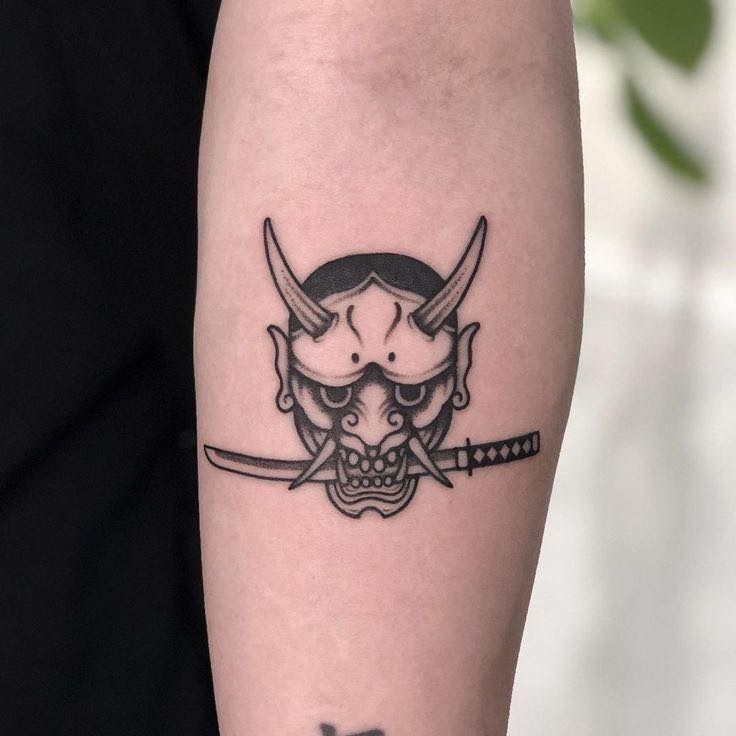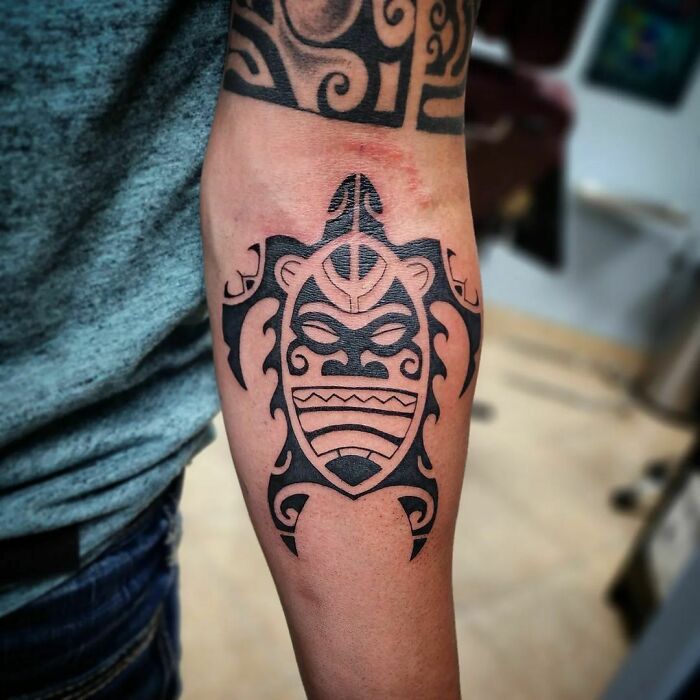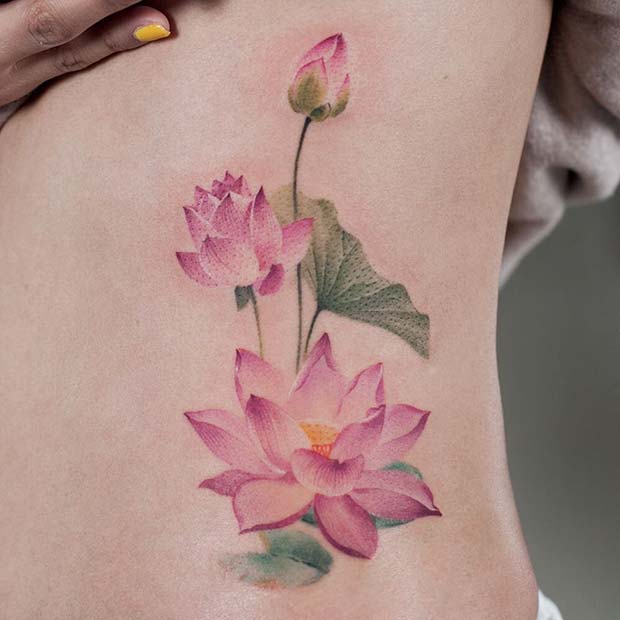
Intricacies of Lotus Tattoo Designs: Popular Lotus Tattoos Style
History and Significance of Lotus Tattoos
The lotus tattoo carries deep historical significance. For centuries, cultures around the world have cherished the lotus. This flower emerges from murky waters, blooming pure and unstained. Because of this, many see the lotus as a symbol of purity, rebirth, and triumph over adversity. In Eastern philosophies, the lotus often associates with spiritual awakening and enlightenment.
In ancient Egypt, the lotus tattoo indicated rebirth and the sun’s cycle. The flower closes and sinks underwater at night, rising and blooming again each morning. This daily cycle made it a powerful symbol of the sun, creation, and rebirth. Meanwhile, in Hinduism and Buddhism, the lotus is sacred. It represents spiritual elevation, with gods and goddesses often portrayed on or near the flower.
The history of the lotus tattoo reflects a journey towards enlightenment, echoing the path the lotus itself takes. Getting a lotus tattoo can signify a personal transformation, a fresh start following hardship, or a commitment to spiritual growth. The design serves as a permanent reminder of the wearer’s own resilience and potential for renewal.
While the lotus tattoo bears a wealth of meaning, it also adapts to varied personal interpretations. People around the world ink this design not only for its beauty but also for the personal connection they feel to its history and symbolism.
Popular Lotus Tattoo Styles and Techniques
Lotus tattoos come in numerous styles and techniques, offering something for every aesthetic. The most popular styles include:
- Traditional: These tattoos feature bold outlines and a limited color palette. They often have a vintage or classic feel.
- Realistic: Realism in lotus tattoos aims for a lifelike depiction. They emphasize shadows and highlights to create depth.
- Watercolor: Watercolor tattoos use vibrant colors and blending techniques. They resemble a painting, with no definite borders.
- Tribal: Tribal styles use black ink and consist of complex patterns and lines. They draw inspiration from traditional tribal artwork.
- Minimalist: Minimalist designs are simple and clean. They use minimal ink and focus on the essential parts of the lotus.
- Geometric: These tattoos combine the lotus with shapes and lines. They create a modern and abstract version of the flower.
In addition to styles, there are several techniques that tattoo artists use to bring lotus designs to life. Some popular techniques include:
- Shading: This technique adds dimension to the tattoo. It can give a soft gradient effect or bold contrasts.
- Dotwork: Dotwork involves creating images with dots. This can give a unique texture to the lotus tattoo.
- Line work: Artists use precise line art to define the shape. This is crucial for designs like minimalist and geometric tattoos.
Choosing the right style and technique for your lotus tattoo depends on your personal taste and the meaning you wish to convey. Discuss with your tattoo artist to find a style that resonates with you and fits your aesthetic preferences. Remember, a lotus tattoo can be as simple or intricate as you desire, much like the journey it represents.
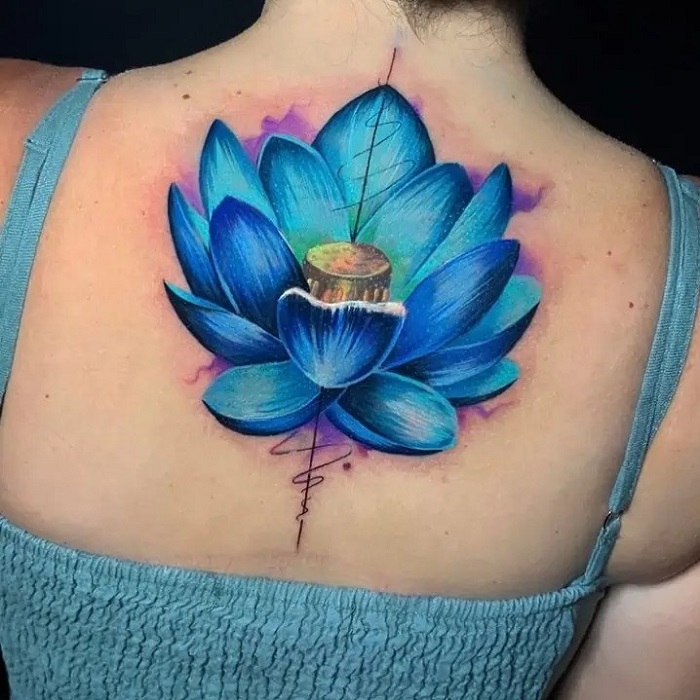
The Symbolism Behind Different Colors of Lotus Tattoos
The color of a lotus tattoo can transform its meaning. Different hues hold unique symbolism. Red lotus tattoos often signify love and compassion. In many cultures, they echo feelings of the heart. Pink lotus designs are tied to Buddhism, representing the Buddha himself. Many choose pink for its spiritual connotations.
White lotus tattoos embody purity and perfection. They suggest a mind untainted by the chaos of life. They are preferred by those seeking peace. Blue lotus representations speak to wisdom and knowledge. They may also indicate a quest for understanding. Gold or yellow lotus tattoos carry ties to wealth, prosperity, and enlightenment.
Purple lotus tattoos stand out for their mystical and esoteric connections. They can symbolize a deep sense of spirituality. For a tattoo that covers a wide range of meanings, purple is a versatile choice.
Choosing the color of your lotus tattoo is as important as selecting its style. It adds deeper layers to your tattoo’s personal narrative. Discuss with your artist the shades that best fit your story. A choice made with care will resonate with your journey much like the lotus itself blooms with significance.
Placement Ideas for Lotus Tattoos
When choosing where to place your lotus tattoo, consider the visibility and personal significance of the location. Each spot on the body can bring a different feel to your lotus tattoo. Here are some common placement ideas, each with its own symbolism and appeal:
- Wrist: A lotus tattoo on the wrist can serve as a regular, subtle reminder of personal growth and spiritual awakening. It’s easily visible to the wearer.
- Back: The back provides a large canvas for more intricate or sizable lotus designs. It’s a place for a private yet significant tattoo.
- Chest: A chest placement is close to the heart, making it ideal for a lotus tattoo that represents love, passion, or a deep connection to spiritual beliefs.
- Ankle: An ankle tattoo is both discreet and charming, symbolizing a path of enlightenment and grace with each step.
- Shoulder: A lotus on the shoulder can represent carrying one’s beliefs and experiences with strength. It’s a spot that lends itself to bold expression.
- Forearm: For those who want to share their journey with others, a forearm tattoo showcases the lotus visibly and can inspire conversations about its significance.
- Thigh: A thigh tattoo is personal and can be concealed or revealed as the wearer chooses. It allows for larger, more detailed lotus designs.
Every placement option carries with it a unique conversation with the public and the wearer. Before deciding, think about how often you want your lotus tattoo to be seen and what personal story you want it to tell. Your tattoo artist can help you choose the perfect location to match the design and significance of your lotus tattoo.

Cultural Impact of Lotus Tattoos Around the World
The cultural impact of lotus tattoos spans the globe, with unique meanings in different regions. In Asian cultures, notably in China and Japan, the lotus often signifies purity and divine beauty. It represents the ideal of being untouched by the struggles of life. Many Asians get lotus tattoos as a symbol of their religious faith or to denote their struggle for perfection in a chaotic world.
In the West, lotus tattoos have absorbed new interpretations, sometimes associated with personal growth and individual enlightenment. Western interpretations often focus on the journey from darkness to light, reflecting the lotus’s growth from murky waters to a beautiful blossom.
In Indian culture, the lotus tattoo is deeply rooted in the Hindu religion. It symbolizes beauty arising from the muck, similar to spiritual awakening from the material world. Many people wear this tattoo as a sign of the purity of the soul and mind.
For those in Egypt and parts of the Middle East, the lotus stands for rebirth and the sun. Due to its daily cycle of life, death, and re-emergence, it’s revered as a powerful emblem of the natural world’s rhythms.
Across all cultures, the lotus tattoo is a sign of resilience. It shows that one can go through tough times and come out unscarred, just as the lotus remains pure even after emerging from murky waters. It’s a universal symbol that resonates with many, regardless of cultural background.
The rich cross-cultural impact of the lotus tattoo makes it a popular and respected design worldwide. It speaks to diverse groups and helps to convey deep personal and philosophical messages. Whether inspired by religious tradition, personal journey, or aesthetic preference, the lotus tattoo connects wearers to a wider community of shared symbolism.
Customizing Your Lotus Tattoo Design
Choosing the perfect lotus tattoo design is a personal journey. It reflects your individuality and the meanings you associate with the lotus. When customizing your tattoo, consider the following aspects to ensure your design is unique to you:
- Incorporate Personal Elements: Blend elements that represent your life or beliefs into the lotus design. This could mean including initials, dates, or symbols that hold personal significance.
- Play with Color: Use colors that resonate with you. As mentioned earlier, each color adds different symbolism to your tattoo. Pick shades that reflect your spirit or journey.
- Combine Different Styles: Mix and match tattoo styles to create something truly one-of-a-kind. You could merge a geometric pattern with watercolor splashes or add tribal elements to a minimalist design.
- Size and Detail: Decide on the size and level of detail in your tattoo. A larger tattoo allows for intricate details, while a smaller one might focus on the simplistic beauty of the lotus.
- Placement: Your tattoo’s location on the body can complement the design. A delicate, minimalist lotus might suit a wrist or ankle, whereas a bold, detailed piece could find its home on the back or chest.
- Consult with Your Artist: Share your ideas with your tattoo artist. Their experience can help refine your vision and suggest creative ways to personalize the lotus design.
Remember, a tattoo is a form of self-expression. Your lotus tattoo should be as unique as your journey. Use these tips to tailor a design that speaks truly of who you are and what you stand for. With careful thought and meaningful customization, your lotus tattoo will not only be aesthetically pleasing but also a perfect representation of your personal story and growth.
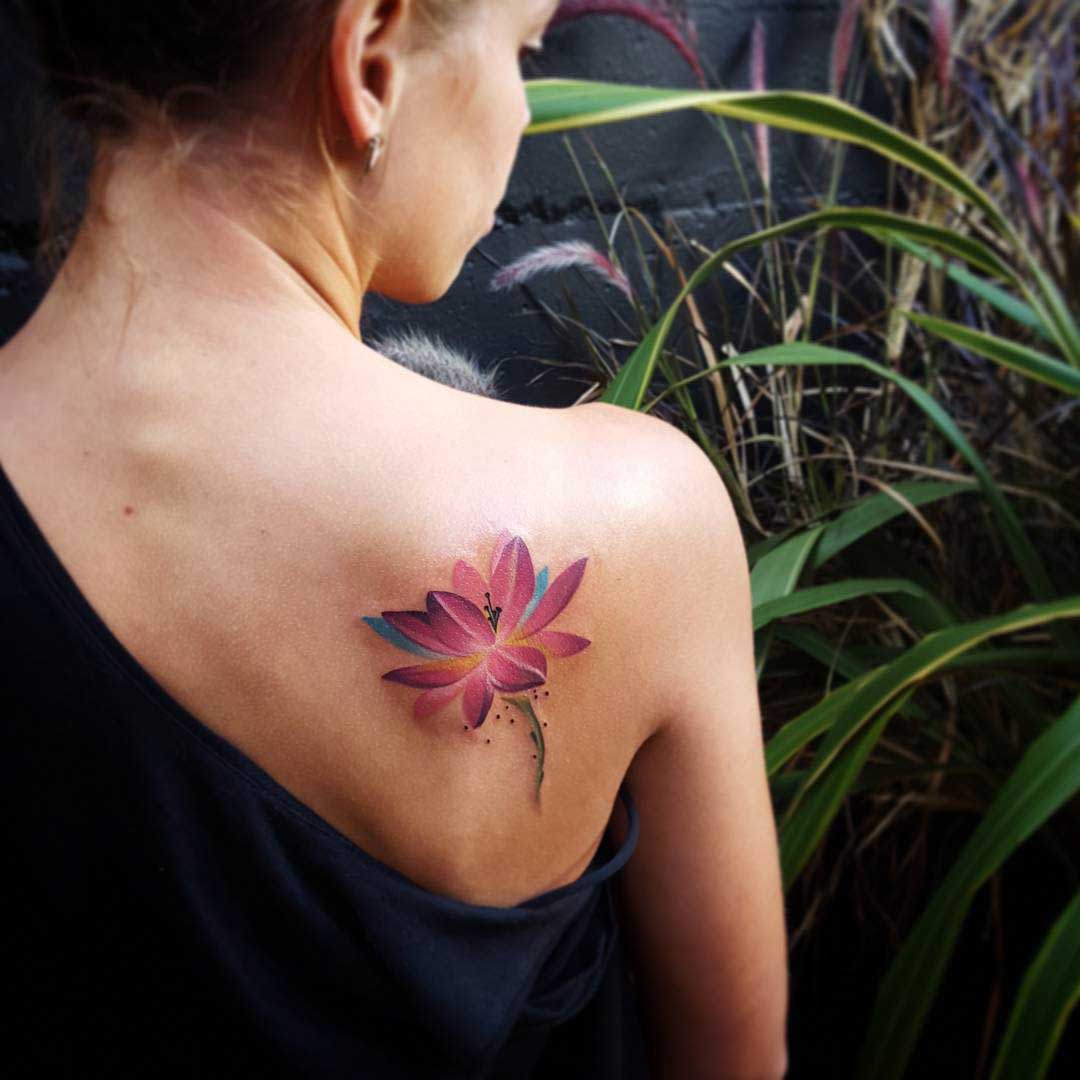
Aftercare Tips for Your New Lotus Tattoo
When you get a new lotus tattoo, proper aftercare is crucial for healing and retaining the beauty of your ink. Here are key tips to help you through the healing process:
- Keep it Clean: Gently wash your tattoo with mild, fragrance-free soap. Pat it dry with a clean cloth.
- Moisturize Regularly: Apply a thin layer of tattoo-specific moisturizer to keep the skin hydrated but not suffocated.
- Avoid Sun Exposure: Protect your tattoo from direct sunlight. UV rays can fade the colors and damage the healing skin.
- Don’t Pick or Scratch: As your tattoo heals, it will itch and peel. Picking can cause scarring and affect the ink, so resist the urge.
- Wear Loose Clothing: Tight clothing can irritate the tattooed area. Choose loose, soft fabrics that won’t rub against your new tattoo.
- Keep it Dry: Limit time in water. Short showers are fine, but avoid baths, pools, and hot tubs until it’s completely healed.
- Be Patient with Healing: Healing times vary depending on size and location. On average, it takes about 2 weeks to a month to heal.
- Follow Your Artist’s Advice: Your tattoo artist will give you aftercare instructions. Follow these closely for the best results.
Care for your lotus tattoo as you would any significant investment. With these aftercare steps, you ensure its longevity and preserve the vibrant colors and sharp lines that make your design stand out. Remember, how you care for your tattoo in the beginning can make a lasting difference.
Inspiring Examples of Lotus Tattoos
Lotus tattoos are as diverse as their meanings, with countless designs that inspire. Below are some striking examples that capture the essence of the lotus:
- Blended with Nature: Some tattoos show the lotus among water or leaves, emphasizing its connection to nature.
- Elemental Lotus: Including elements like fire or air around the lotus can symbolize balance and harmony.
- Mandala Lotus: The intricate patterns of a mandala paired with a lotus tattoo can signify unity and eternity.
- Celestial Themes: Stars, moons, and planets combined with a lotus create a cosmic feel, suggesting a broader universal context.
- Fauna Fusion: Animals like koi fish or birds with the lotus tattoo can represent freedom, luck, and aspiration.
- Mythological Imagery: Incorporating gods or mythical beings in lotus tattoos can reflect spiritual devotion or cultural heritage.
- Chakra Colors: Aligning the lotus with chakra colors can express inner peace and spiritual alignment.
These examples are just the start. When you explore lotus tattoo designs, you’ll find each one tells a different story. Whether you draw on cultural symbolism, personal experiences, or aesthetic preferences, your lotus tattoo can be a source of inspiration and a reflection of your unique journey. Discover the design that speaks to you and let it blossom on your skin, much like the lotus does each day.
